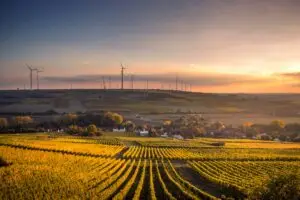The way we approach carbon emissions is changing rapidly. Carbon credits have become a key tool in helping The Carbon Credit Revolution: A Step Towards a Greener Economy
The way we approach carbon emissions is changing rapidly. Carbon credits have become a key tool in helping businesses and governments balance economic growth with sustainability. By turning carbon emissions into tradeable assets, this system is reshaping industries and accelerating the move towards a greener future. At Earthfit Solutions, we are committed to providing sustainable solutions that contribute to reducing carbon footprints and promoting a cleaner environment.
What Are Carbon Credits and Why Are They Important?
Carbon credits are permits that allow the holder to emit a specific amount of carbon dioxide or other greenhouse gases (GHGs). Typically, one carbon credit equals one metric ton of carbon dioxide equivalent (CO2e). These credits are part of a broader cap-and-trade system designed to limit overall emissions by assigning economic value to the cost of polluting.
Here’s why carbon credits are vital:
Economic Incentive to Reduce Emissions : By placing a price on pollution, carbon credits encourage businesses to find cost-effective ways to reduce emissions.
Funding for Green Projects : Credits can be purchased from green initiatives like reforestation, renewable energy, or clean cookstove programs, helping channel funds to sustainable development.
Scalability and Flexibility : Carbon credits provide a flexible approach to emissions reduction, allowing entities to meet goals either through internal reductions or by supporting external projects.
The Evolution of the Carbon Credit Market and Its Impact on Global Emissions
The idea of tradable emissions originated from the Kyoto Protocol in 1997, where carbon credits were first introduced as part of international climate strategy. The Clean Development Mechanism (CDM), established under Kyoto, allowed industrialized countries to invest in emission-reducing projects in developing nations and earn credits.
Since then, the carbon credit market has evolved considerably:
Voluntary vs. Compliance Markets : The credit market is divided into compliance markets (regulated by law, such as the EU Emissions Trading System) and voluntary markets (used by companies and individuals wanting to offset their emissions proactively).
Market Expansion : More than 60 carbon pricing initiatives now exist globally, including national and sub-national cap-and-trade programs.
Environmental Impact : Though not perfect, carbon credit systems have helped curtail billions of tons of emissions and incentivize the growth of renewable energy, reforestation, and energy efficiency projects worldwide.
How Businesses and Governments Are Leveraging Carbon Credits for Sustainability
Businesses and governments are increasingly embracing carbon credits as part of their sustainability toolkit. Here’s how:
Net-Zero Commitments: Companies like Microsoft, Google, and Shell use carbon offsets to tackle hard-to-abate emissions, inching closer to net-zero targets.
ESG and Investor Pressure: Investors are scrutinizing corporate Environmental, Social, and Governance (ESG) metrics, and carbon credits offer a measurable commitment to climate action.
Public Policy Integration: Governments worldwide are adopting cap-and-trade systems or carbon taxes that incorporate credit trading, aligning local policies with global climate goals under the Paris Agreement.
Brand Image and Consumer Demand: Consumers are increasingly eco-conscious. Carbon neutrality labels and emission offsetting can strengthen brand loyalty and consumer trust.
How AI, Blockchain, and IoT Are Revolutionizing Carbon Trading
Modern technology is catalyzing transparency, accuracy, and scalability in the carbon credit ecosystem.
Blockchain: Blockchain provides decentralized verification systems to track carbon credit issuance, ownership, and retirement, preventing double-counting and fraud. Platforms like KlimaDAO and Toucan Protocol are already demonstrating blockchain’s potential in voluntary carbon markets.
AI & Machine Learning: AI models analyze satellite images, environmental data, and soil composition to quantify carbon sequestration more accurately, enhancing the credibility of nature-based offset projects.
Internet of Things (IoT): IoT sensors measure real-time emissions data from factories, vehicles, or farms, offering proof of reductions and ensuring data integrity for credit issuance.
Challenges and Criticisms of Carbon Credit Systems
Despite their growing popularity, carbon credit systems face valid criticisms and challenges:
Greenwashing: Some companies use low-quality or unverifiable carbon credits to appear sustainable without making real operational changes.
Permanence and Leakage: Nature-based solutions (e.g., reforestation) may not guarantee permanent carbon sequestration, especially when forests are at risk of fire, illegal logging, or policy changes.
Measurement Inaccuracy: Quantifying the actual carbon reductions remains complex and often imprecise, leading to questions about the effectiveness of several offset projects.
Market Fragmentation: Lack of global standards and verification systems results in inconsistent credibility and difficulty in comparing credit quality across markets.
Addressing these issues will require robust governance, standardized methodologies, and continued technological innovation.
Future Trends and Opportunities in Carbon Trading
The carbon credit revolution is far from over. Several key trends are shaping its future trajectory:
Consolidation of Standards: The emergence of unified global standards for credit verification and reporting (e.g., Integrity Council for the Voluntary Carbon Market) will enhance credibility.
Integration with National Inventories: Countries may integrate voluntary credits into their national emissions accounting under Article 6 of the Paris Agreement.
Corporate Carbon Portfolios: Just as investment portfolios manage financial risk, companies may begin building diversified carbon portfolios to manage environmental risk.
Nature-Based Carbon Removal: Regenerative agriculture, blue carbon (marine ecosystems), and agroforestry will become hotbeds of carbon offset innovation.
Carbon Credit Tokenization: NFTs and digital tokens representing carbon credits may drastically improve liquidity and open access to decentralized investors.
Conclusion: Paving the Way for a Greener Tomorrow
The carbon credit market is more than just an economic tool—it’s a bridge to a sustainable future. By turning emissions into accountability, it drives real change, funding climate solutions and fostering responsible growth. While challenges persist, innovation and collaboration will shape a carbon-conscious world where sustainability isn’t an option but a necessity.
Looking to offset your company’s carbon footprint? Explore Earthfit Solutions’ sustainable initiatives today.
Small changes spark big transformations
Every carbon credit, every conscious choice, and every step toward sustainability brings us closer to a cleaner, greener world.
Together, let’s turn action into impact.








